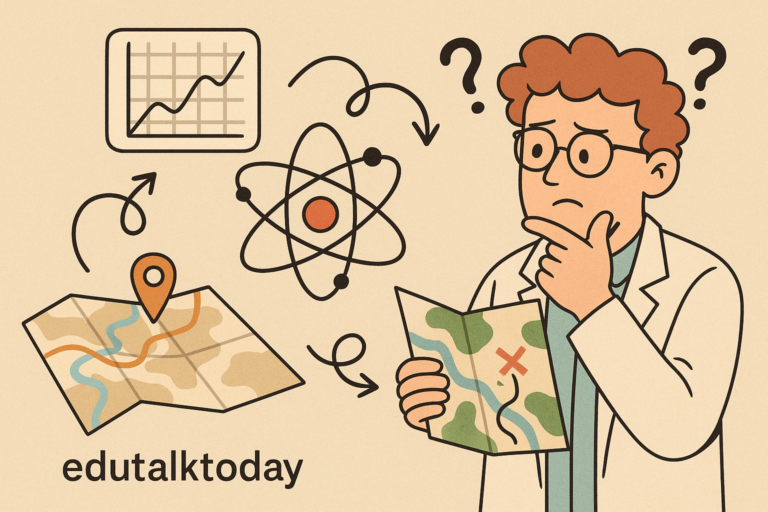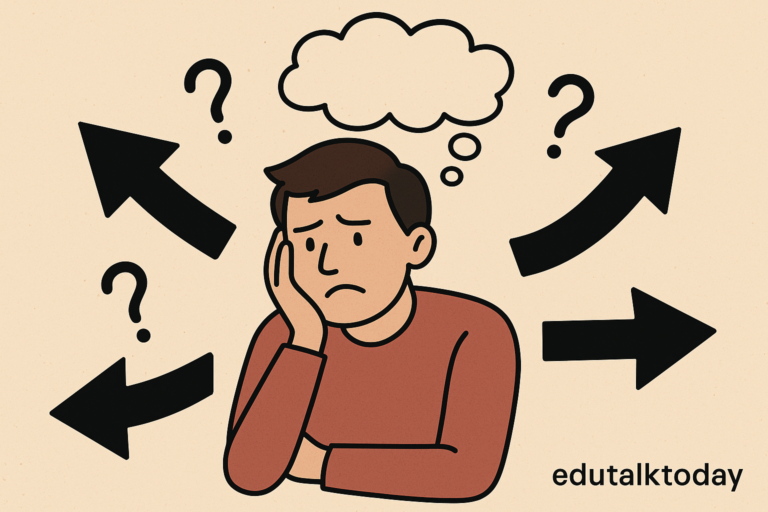How to Make Decisions Like a Pragmatist

Most of us have been in situations where a decision looked perfect on paper but fell apart in the real world. That’s where a pragmatist’s mindset changes the game. Pragmatism isn’t about lowering the bar or ignoring theory—it’s about asking, what actually works here, given the messiness we’re in?
For experts like you and me, who’ve read the frameworks, studied the models, and maybe even written them, it’s easy to get pulled into elegant abstractions. But in practice, context is always king. Pragmatism forces us to zoom out of the tidy slide decks and into the gritty, unpredictable reality where variables keep shifting. And honestly, that’s what makes it exciting.
The challenge is balancing our love for big ideas with a sharp focus on outcomes. Because at the end of the day, a decision is only as good as the results it produces in the real world.
Core Principles of Pragmatic Decision-Making
When I talk about pragmatic decision-making with seasoned leaders, researchers, or strategists, I often see the same reaction: a half-smile, as if to say, “Sure, pragmatism—it’s just common sense.”
But dig deeper, and you’ll notice that pragmatism, as a philosophy of action, asks us to do something that’s surprisingly rare: let go of purity and embrace usefulness. That’s not always comfortable for experts, especially when we’ve built careers on defending theories, models, or methods. Yet it’s exactly what makes pragmatic thinking powerful. Let’s break down what it actually means in practice.
Context over abstraction
Think about the last time someone insisted on applying a best practice without considering where it came from. I remember a tech executive I worked with who tried to apply Google’s “20% time” model at a mid-sized manufacturing company. Great idea in theory—encourage innovation by letting employees use part of their time on passion projects. But in a plant where shifts are tightly scheduled and margins are razor-thin, it turned into chaos.
Projects got abandoned, supervisors were frustrated, and employees felt stressed. The lesson? What works brilliantly in one context can flop spectacularly in another. Pragmatists know that no model is universal; every choice has to be adapted to the environment it’s landing in.
Flexibility over dogma
Experts are often tempted to hold onto principles as if they’re unshakable laws. But pragmatism thrives in uncertainty, where rules are provisional and reality is messy. Look at public health during the early months of COVID-19. Guidelines shifted constantly—on masks, on distancing, on vaccines—because the data kept changing.
That flexibility frustrated the public, but it was exactly what a pragmatic approach required: update the playbook as soon as new evidence comes in. Sticking rigidly to the first set of assumptions would’ve been catastrophic. For experts, the challenge is learning to live with that fluidity without feeling like we’re betraying our own rigor.
Experimentation and iteration
One of the most pragmatic moves you can make is treating decisions like hypotheses, not verdicts. I once worked with a startup founder who was obsessed with getting every decision “right” the first time. She wanted perfect market research, perfect product-market fit, perfect investor decks.
Meanwhile, competitors were shipping scrappy beta versions, learning from customers, and pivoting fast. By the time her polished product launched, the market had already moved on. Pragmatists embrace a different rhythm: make a small bet, learn quickly, adjust. It’s the same logic behind A/B testing, agile development, and lean policy pilots. The beauty is that you don’t need certainty to move forward—you just need feedback loops tight enough to learn before the stakes get too high.
Consequences as the measure of value
William James, one of the original pragmatist philosophers, famously argued that the truth of an idea lies in its consequences. I think about this every time I see a leader defend a strategy because “it aligns with our vision” or “it’s what the literature suggests.” Fine. But what are the results? If a new hiring policy looks equitable on paper but disproportionately drives away talented candidates, its theoretical elegance doesn’t matter. If a machine-learning model hits all the accuracy benchmarks but fails to integrate with the messy workflows of real users, it’s a miss. Pragmatists put outcomes front and center: if it doesn’t deliver in practice, it’s not valuable—no matter how beautiful the theory behind it.
Why this feels uncomfortable for experts
Here’s the catch: experts are trained to seek consistency, coherence, and generalizable truths. Pragmatism can feel uncomfortably ad hoc, even opportunistic. But that’s precisely why it matters. Real-world systems—from markets to ecosystems to social dynamics—are too complex to be captured by static formulas. A pragmatist isn’t throwing away expertise; they’re using expertise as raw material for adaptive, consequence-driven action.
Think about how this plays out in strategy consulting. The frameworks—Porter’s Five Forces, the BCG Matrix, Blue Ocean Strategy—are incredibly useful lenses. But a seasoned consultant doesn’t treat them as commandments. They’re starting points, not finish lines. Pragmatists will bend, remix, and sometimes outright ignore the frameworks if the situation demands it. That’s not sloppy thinking; it’s expert judgment tuned to reality.
The upside of embracing pragmatism
Here’s what I find exciting: when experts let themselves think like pragmatists, they often discover a new kind of freedom. You stop obsessing over whether your choice is theoretically pristine, and instead focus on making it robust in the wild. You give yourself permission to pivot without shame, because you’re not wedded to being “right”—you’re committed to learning. And in fast-moving domains—whether it’s AI, climate policy, or organizational leadership—that mindset is pure gold.
So when we talk about pragmatism, let’s not dismiss it as watered-down theory or “just common sense.” It’s a disciplined way of approaching decisions that demands courage, humility, and sharpness. It asks us to be rigorous not in defending ideas, but in testing them against the friction of reality. And that’s a skill even the most seasoned experts can still level up on.
The Pragmatist’s Toolkit
Whenever I share the idea of a “pragmatist’s toolkit,” I like to emphasize that these aren’t hacks or shortcuts—they’re habits. And habits, when you’re making high-stakes decisions, matter more than any single technique. Experts often fall into the trap of overanalyzing or overengineering solutions. A pragmatist, by contrast, arms themselves with a handful of tools that make decision-making faster, clearer, and more resilient. Let’s walk through some of these habits and see how they show up in real practice.
Define success in terms of outcomes, not intentions
This one sounds obvious, but it’s incredible how often we reward intention over impact. I once sat in on a leadership meeting where a team proudly described their sustainability initiative—dozens of workshops, glossy brochures, new KPIs. But when someone asked how much carbon they’d actually reduced, the room went quiet. They’d been measuring activity, not results. Pragmatists cut through that noise by asking: what does success look like in practice, and how do we know we’ve hit it? It’s a question that strips away good intentions and demands evidence.
Start with small, reversible moves before big commitments
Here’s where pragmatists differ from bold visionaries: they prefer to test before they scale. In software, we talk about feature flags—rolling out changes to 5% of users before hitting “go” for everyone. That’s the spirit of reversibility. A policymaker I admire once described it as “designing policies with an undo button.” For example, instead of fully nationalizing a healthcare reform overnight, trial it in two regions, learn, and then expand. Small, reversible moves keep you agile and protect you from betting the farm too early.
Blend qualitative judgment with quantitative evidence
Experts often lean too heavily on one side—either the rigor of data or the richness of lived experience. Pragmatists insist on both. Take hiring. Algorithms can crunch résumés and predict job performance with surprising accuracy. But anyone who’s hired knows that gut feeling about cultural fit, adaptability, or leadership presence still matters. A pragmatic toolkit doesn’t force you to choose. Instead, you combine data with judgment, aware that neither is infallible. The sweet spot is where numbers and nuance sharpen each other.
Use scenario thinking to stress-test assumptions
I’ve seen strategies crumble not because the core idea was wrong but because no one asked, “What if the world doesn’t cooperate?” Scenario thinking is a pragmatist’s way of inoculating against surprise. For instance, an energy company might build a strategy around stable oil prices—but a simple stress-test asking “what if oil drops by 30%?” can reveal vulnerabilities. The military does this constantly through war-gaming. Pragmatists borrow the same approach: play out scenarios, watch your assumptions wobble, and plan accordingly.
Favor decisions that preserve future optionality
This one’s a bit of a hidden gem. The best decisions aren’t always the ones that maximize value today—they’re the ones that leave you room to maneuver tomorrow. Think about career choices. If you specialize too narrowly, you might maximize your short-term expertise but lock yourself out of adjacent opportunities. By contrast, a pragmatic choice—say, developing broad leadership skills—keeps doors open across industries. In finance, this is the equivalent of holding liquid assets. Optionality is a kind of insurance policy against uncertainty, and pragmatists protect it fiercely.
Continuously recalibrate based on feedback and results
The final habit is what ties the toolkit together: never treating a decision as done. I like to think of pragmatists as pilots, constantly scanning the dashboard, adjusting the throttle, correcting for turbulence. Feedback isn’t an afterthought—it’s baked into the process. Think of Toyota’s famous “andon cord,” which lets any worker stop the production line the moment they see a defect. That’s pragmatism in action: real-time adjustment instead of post-mortem regret.
Why these habits work together
Each of these habits is powerful on its own, but they reinforce each other. Defining success by outcomes makes recalibration meaningful. Starting small makes optionality possible. Blending data with judgment sharpens your scenarios. Together, they create a decision-making system that’s adaptive, resilient, and grounded. And here’s the kicker: they’re not complicated. They just require the humility to say, “I don’t need to be perfectly right the first time—I just need to be able to learn and adjust faster than the situation changes.” That’s the pragmatist’s edge.
Pragmatism in Action
Philosophy gets interesting when it hits the ground. So let’s move from principles and toolkits into real-world domains where pragmatism separates the successful from the stuck. What fascinates me is how consistent the pragmatist’s edge is, whether you’re talking about leadership, policy, or technology.
Strategic leadership
Leaders love bold visions. The problem is, the world rarely behaves according to those visions. A pragmatic leader doesn’t ditch vision altogether—they anchor in it—but they treat execution as an ongoing negotiation with reality. Take Satya Nadella at Microsoft. Instead of clinging to the old “Windows everywhere” vision, he pragmatically shifted the company toward cloud services, open-source collaboration, and even partnerships with rivals. That wasn’t the purest play if you measured it against Microsoft’s historic doctrine, but it was the one that worked in the 2010s tech landscape. Pragmatism let him reinvent an aging giant without losing credibility.
Contrast that with leaders who cling too tightly to dogma. Think of Kodak insisting it was a “film company” long after digital photography was obviously reshaping the market. That rigidity turned an iconic brand into a cautionary tale. Pragmatism, in this case, could have been the difference between reinvention and collapse.
Policy-making
Policy is perhaps the most visible stage for pragmatism, because it’s where ideals smash directly into constraints—budget, politics, human behavior. Franklin D. Roosevelt’s New Deal is a classic case study. Roosevelt didn’t arrive with a perfect blueprint. Instead, he treated the Depression as a series of experiments: some programs succeeded, others flopped, but he kept moving, adjusting, recalibrating. His famous line—“It is common sense to take a method and try it; if it fails, admit it frankly and try another”—is pure pragmatism.
Contrast that with the rigid austerity measures we’ve seen in some crises, where governments double down on policies despite evidence of harm. Pragmatism doesn’t mean abandoning ideals like justice or equity, but it does mean judging those ideals by their lived consequences. A welfare policy that looks good in a think tank paper but traps people in bureaucratic cycles isn’t serving justice in practice. Pragmatists push to redesign, not defend, in the face of evidence.
Technology and innovation
This is where pragmatism really shines. Tech is littered with stories of companies that over-engineered elegant systems that no one used. Remember Google Glass? Incredible technology, but pragmatically useless for most people’s daily lives. Contrast that with the iPhone, which wasn’t the most technically advanced device in 2007. What Apple nailed was pragmatic design—balancing usability, desirability, and feasibility.
A more current example is artificial intelligence. Researchers may pursue models with jaw-dropping accuracy, but pragmatic adoption depends on integration, explainability, and trust. A healthcare AI that predicts disease perfectly but can’t explain its reasoning won’t get past regulators. Pragmatism isn’t anti-innovation—it’s the bridge between innovation and adoption.
Why pragmatism feels radical in practice
Here’s the funny thing: even though pragmatism sounds like common sense, it often looks radical in action. It means telling your board, “We don’t have the full picture yet, so we’re going to launch small and adjust.” It means telling your constituents, “We’re trying something new, and if it doesn’t work, we’ll change course.” It means telling your engineering team, “Simplicity beats elegance if users actually adopt it.” Those admissions take courage, especially in expert-driven environments where certainty is currency. But that’s exactly why pragmatists stand out—they’re willing to trade the illusion of control for the reality of progress.
The payoff
The payoff is resilience. Pragmatist leaders build organizations that can bend without breaking. Pragmatist policymakers craft systems that evolve instead of ossify. Pragmatist innovators create products that live in the real world instead of research labs. And for experts, that resilience is invaluable, because it means our ideas don’t just sit in journals or strategy decks—they live, adapt, and keep delivering.
Final Thoughts
If there’s one thing pragmatism teaches us, it’s that decision-making is less about being right and more about being responsive. Experts often feel pressure to provide definitive answers, but pragmatists flip the script: they prioritize adaptability, context, and outcomes over purity. And that’s liberating. It means we don’t have to chase perfect certainty—we just have to commit to learning faster than the world changes. In messy, unpredictable environments, that’s not just practical—it’s the smartest kind of expertise we can practice.





